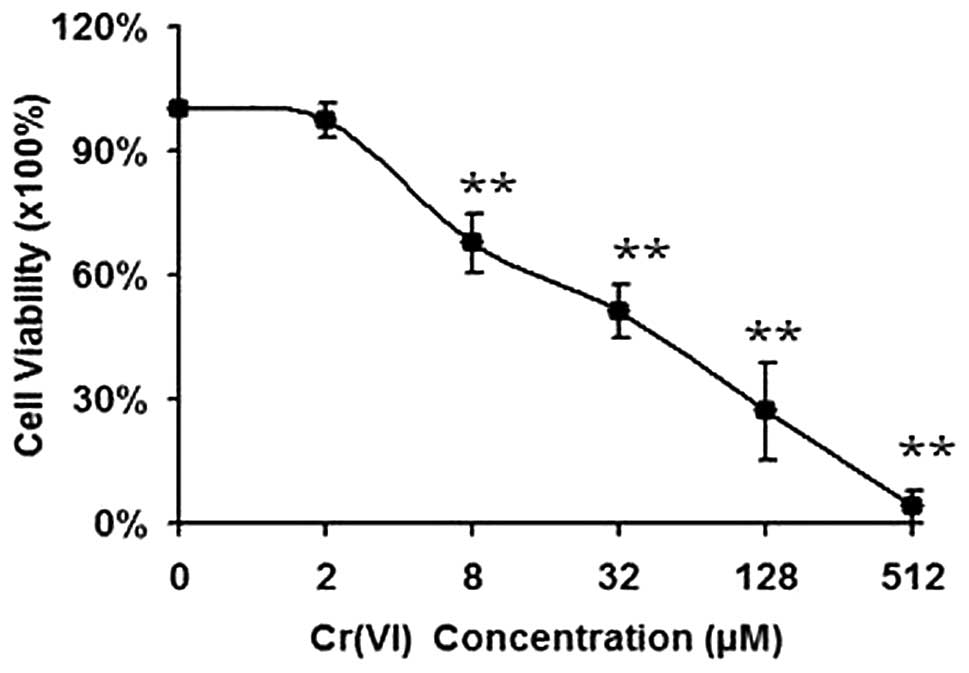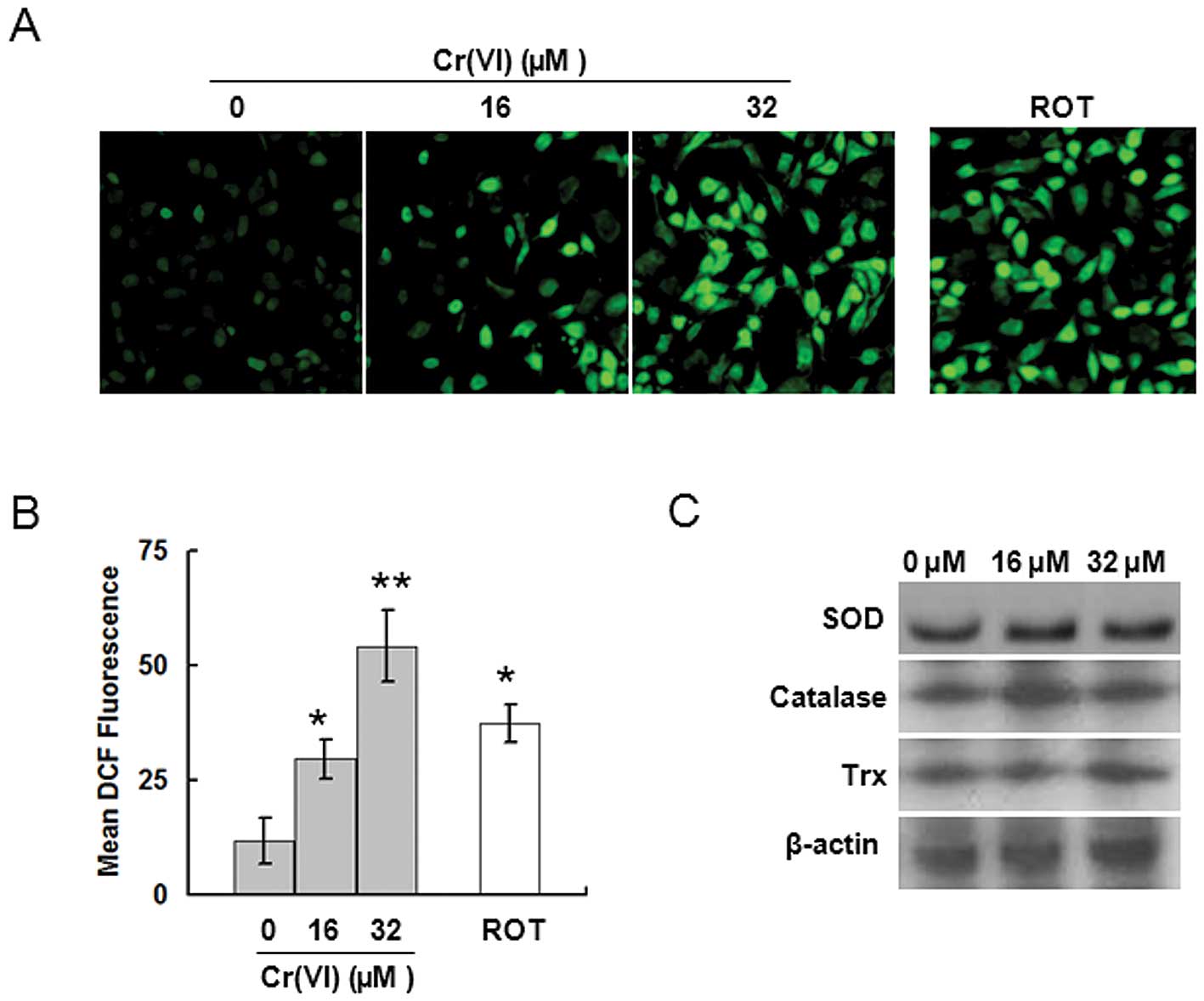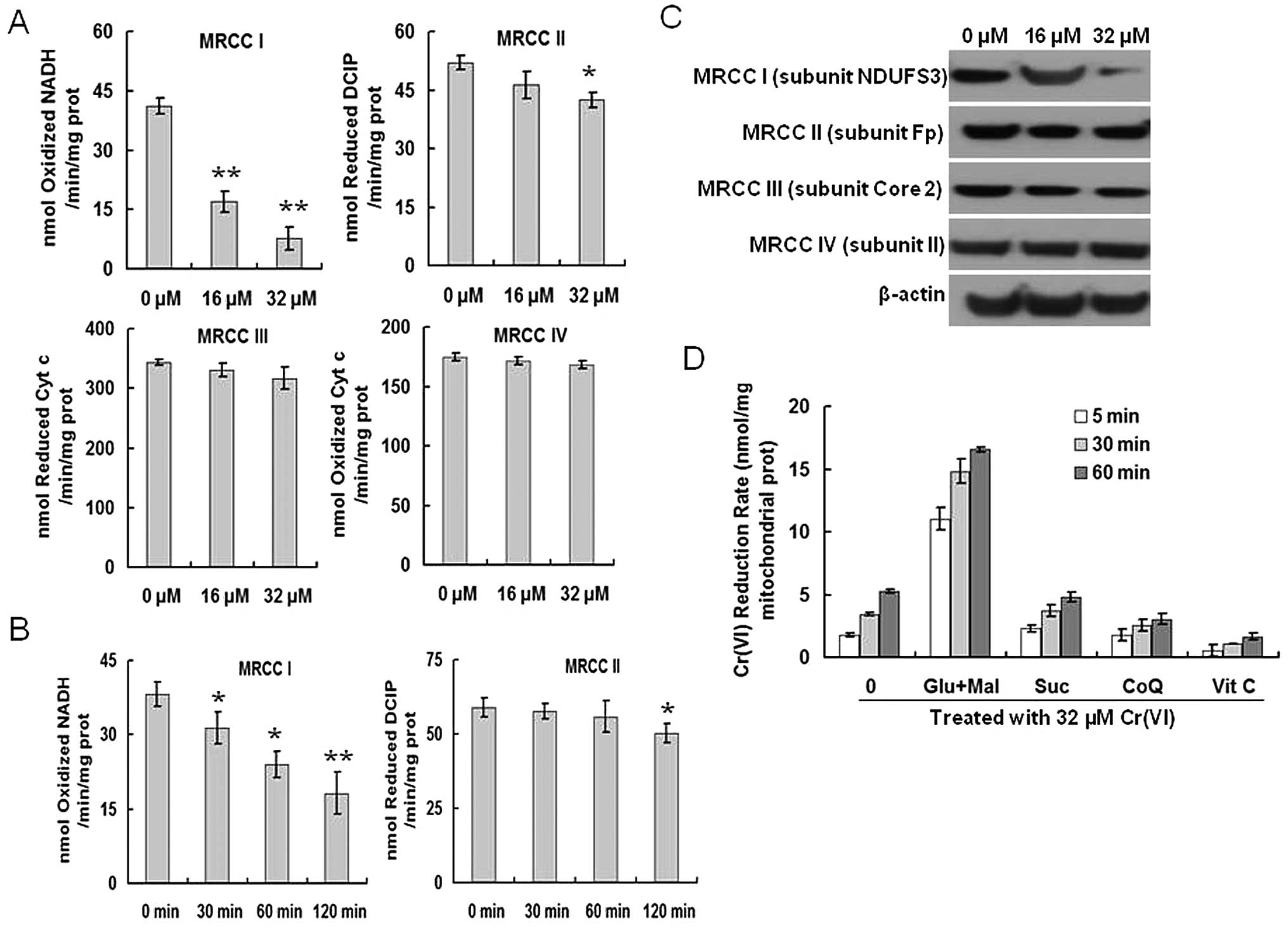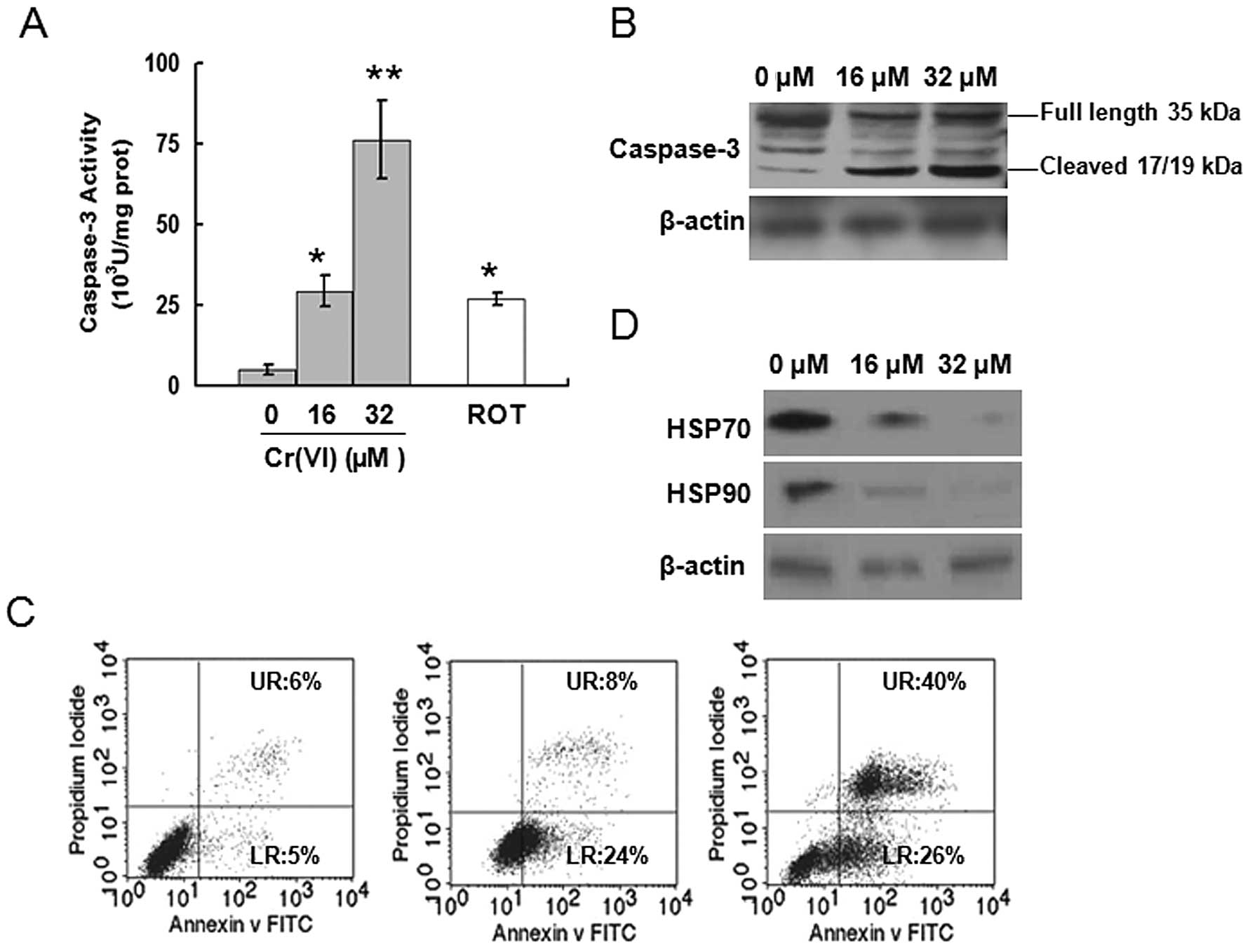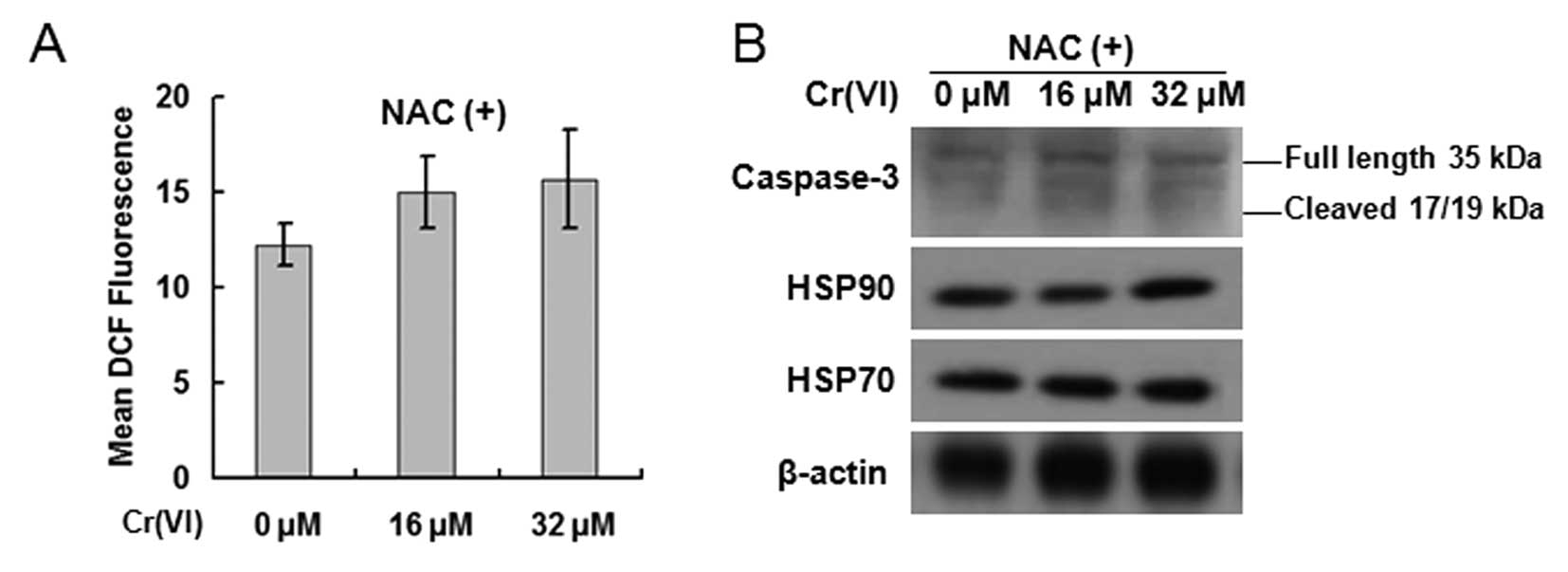|
1.
|
J BarnhartOccurrences, uses, and
properties of chromiumRegul Toxicol
Pharmacol26S3S7199710.1006/rtph.1997.11329380835
|
|
2.
|
BD KergerDJ PaustenbachGE CorbettBL
FinleyAbsorption and elimination of trivalent and hexavalent
chromium in humans following ingestion of a bolus dose in drinking
waterToxicol Appl
Pharmacol141145158199610.1016/S0041-008X(96)80020-28917687
|
|
3.
|
J YeX ShiGene expression profile in
response to chromium-induced cell stress in A549 cellsMol Cell
Biochem222189197200110.1023/A:101797441505211678601
|
|
4.
|
K ChoureyMR ThompsonJ Morrell-FalveyGlobal
molecular and morphological effects of 24-hour chromium(VI)
exposure on Shewanella oneidensis MR-1Appl Environ
Microbiol7263316344200610.1128/AEM.00813-0616957260
|
|
5.
|
PH ConnettKE WetterhahnMetabolism of the
carcinogen chromate by cellular constituentsStructures and Bonding
Inorganic Elements in
BiochemistrySpringer-VerlagBerlin93124198310.1007/BFb0111319
|
|
6.
|
X ShiA ChiuCT ChenReduction of chromium
(VI) and its relationship to carcinogenesisJ Toxicol Environ Health
B Crit Rev287104199910.1080/10937409928124110081526
|
|
7.
|
P VenierA MontaldiF MajoneV BianchiAG
LevisCytotoxic, mutagenic and clastogenic effects of industrial
chromium
compoundsCarcinogenesis313311338198210.1093/carcin/3.11.13316758977
|
|
8.
|
M GunaratnamMH GrantCr (VI) inhibits DNA,
RNA and protein syntheses in hepatocytes: involvement of
glutathione reductase, reduced glutathione and DT-diaphoraseToxicol
In Vitro22879886200810.1016/j.tiv.2008.01.00518321676
|
|
9.
|
AI RafaelA AlmeidaP SantosA role for
transforming growth factor-beta apoptotic signaling pathway in
liver injury induced by ingestion of water contaminated with high
levels of Cr(VI)Toxicol Appl
Pharmacol224163173200710.1016/j.taap.2007.07.00417692352
|
|
10.
|
Z UngvariBF KrasnikovA CsiszarTesting
hypotheses of aging in long-lived mice of the genus Peromyscus:
association between longevity and mitochondrial stress resistance,
ROS detoxification pathways, and DNA repair efficiencyAge
(Dordr)30121133200810.1007/s11357-008-9059-y
|
|
11.
|
RO PoytonKA BallPR CastelloMitochondrial
generation of free radicals and hypoxic signalingTrends Endocrinol
Metab20332340200910.1016/j.tem.2009.04.00119733481
|
|
12.
|
SK YonallyRA CapaldiThe F(1)F(0) ATP
synthase and mitochondrial respiratory chain complexes are present
on the plasma membrane of an osteosarcoma cell line: An
immunocytochemical
studyMitochondrion6305314200610.1016/j.mito.2006.10.001
|
|
13.
|
N DiasC BaillyDrugs targeting
mitochondrial functions to control tumor cell growthBiochem
Pharmacol70112200510.1016/j.bcp.2005.03.02115907809
|
|
14.
|
W XuL NgoG PerezM DokmanovicPA
MarksIntrinsic apoptotic and thioredoxin pathways in human prostate
cancer cell response to histone deacetylase inhibitorProc Natl Acad
Sci USA1031554015545200610.1073/pnas.060751810317030815
|
|
15.
|
M InoueEF SatoM NishikawaMitochondrial
generation of reactive oxygen species and its role in aerobic
lifeCurr Med Chem1024952505200310.2174/092986703345647714529465
|
|
16.
|
MP WaalkesDA FoxSR PatiernoMJ McCabeMetals
and disorders of cell accumulation: modulation of apoptosis and
cell proliferationToxicol
Sci56255261200010.1093/toxsci/56.2.25510910982
|
|
17.
|
A GhelliC ZannaAM PorcelliLeber’s
hereditary optic neuropathy (LHON) pathogenic mutations induce
mitochondrial-dependent apoptotic death in transmitochondrial cells
incubated with galactose mediumJ Biol Chem278414541502003
|
|
18.
|
J Cinatl JrJ CinatlPH DrieverSodium
valproate inhibits in vivo growth of human neuroblastoma
cellsAnticancer
Drugs8958963199710.1097/00001813-199711000-000079436639
|
|
19.
|
N BrustovetskyT BrustovetskyR JemmersonJM
DubinskyCalcium-induced Cytochrome c release from CNS mitochondria
is associated with the permeability transition and rupture of the
outer membraneJ
Neurochem80207218200210.1046/j.0022-3042.2001.00671.x11902111
|
|
20.
|
D RybergJ AlexanderInhibitory action of
hexavalent chromium (Cr(VI)) on the mitochondrial respiration and a
possible coupling to the reduction of Cr(VI)Biochem
Pharmacol3324612466198410.1016/0006-2952(84)90718-46466363
|
|
21.
|
A ArilloF MelodiaR FracheReduction of
hexavalent chromium by mitochondria: methodological implications
and possible mechanismsEcotoxicol Environ
Saf14164177198710.1016/0147-6513(87)90059-53691371
|
|
22.
|
MC KamradtF ChenVL CrynsThe small heat
shock protein alpha B-crystallin negatively regulates cytochrome
cand caspase-8-dependent activation of caspase-3 by inhibiting its
autoproteolytic maturationJ Biol
Chem2761605916063200110.1074/jbc.C100107200
|
|
23.
|
JA RibeilY ZermatiJ VandekerckhoveHsp70
regulates erythropoiesis by preventing caspase-3-mediated cleavage
of GATA-1Nature445102105200710.1038/nature0537817167422
|
|
24.
|
DL CarlisleDE PritchardJ SinghSR
PatiernoChromium (VI) induces p53-dependent apoptosis in diploid
human lung and mouse dermal fibroblastsMol
Carcinog28111118200010.1002/1098-2744(200006)28:2%3C111::AID-MC7%3E3.0.CO;2-Y10900468
|
|
25.
|
XF WangML XingY ShenX ZhuLH XuOral
administration of Cr (VI) induced oxidative stress, DNA damage and
apoptotic cell death in
miceToxicology2281623200610.1016/j.tox.2006.08.00516979809
|
|
26.
|
DC WallaceMitochondrial diseases in man
and
mouseScience28314821488199910.1126/science.283.5407.148210066162
|
|
27.
|
KN IslamY KayanokiH KanetoTGF-beta1
triggers oxidative modifications and enhances apoptosis in HIT
cells through accumulation of reactive oxygen species by
suppression of catalase and glutathione peroxidaseFree Radic Biol
Med2210071017199710.1016/S0891-5849(96)00493-5
|
|
28.
|
W WangM AdachiR
KawamuraParthenolide-induced apoptosis in multiple myeloma cells
involves reactive oxygen species generation and cell sensitivity
depends on catalase
activityApoptosis1122252235200610.1007/s10495-006-0287-2
|
|
29.
|
N LiK RaghebG LawlerMitochondrial complex
I inhibitor rotenone induces apoptosis through enhancing
mitochondrial reactive oxygen species productionJ Biol
Chem27885168525200310.1074/jbc.M210432200
|
|
30.
|
XL ShiNS DalalEvidence for a Fenton-type
mechanism for the generation of .OH radicals in the reduction of
Cr(VI) in cellular mediaArch Biochem
Biophys2819095199010.1016/0003-9861(90)90417-W2166480
|
|
31.
|
J WaltersC PopFL ScottA constitutively
active and uninhibitable caspase-3 zymogen efficiently induces
apoptosisBiochem J424335345200910.1042/BJ2009082519788411
|
|
32.
|
AW Abu-QareMB Abou-DoniaBiomarkers of
apoptosis: release of cytochrome c, activation of caspase-3,
induction of 8-hydroxy-2′-deoxyguanosine, increased
3-nitrotyrosine, and alteration of p53 geneJ Toxicol Environ Health
B Crit Rev4313332200111503418
|
|
33.
|
E PaitelR FahraeusF CheclerCellular prion
protein sensitizes neurons to apoptotic stimuli through
Mdm2-regulated and p53-dependent caspase-3-like activationJ Biol
Chem2781006110066200310.1074/jbc.M21158020012529324
|
|
34.
|
A De MaioHeat shock proteins: facts,
thoughts, and dreamsShock111121999
|
|
35.
|
HM BeereBB WolfK CainHeat-shock protein 70
inhibits apoptosis by preventing recruitment of procaspase-9 to the
Apaf-1 apoptosomeNat Cell
Biol2469475200010.1038/3501950110934466
|















